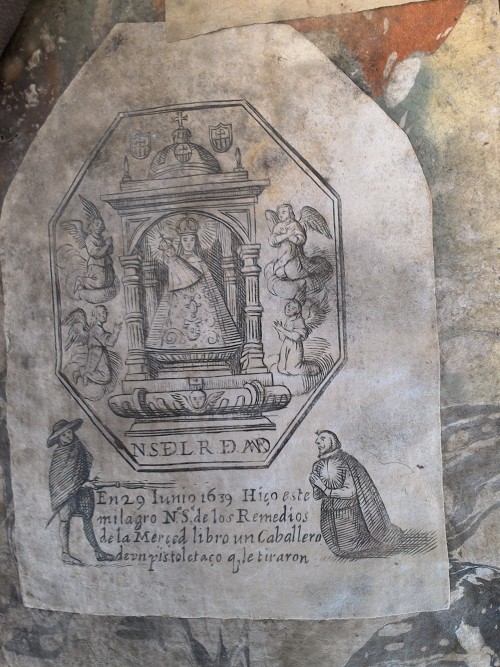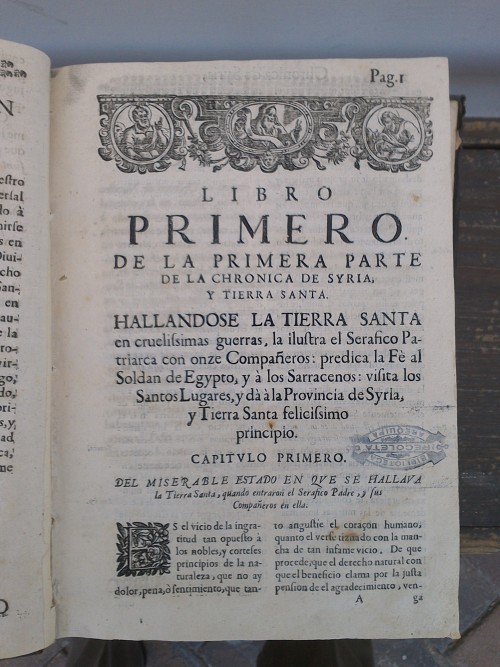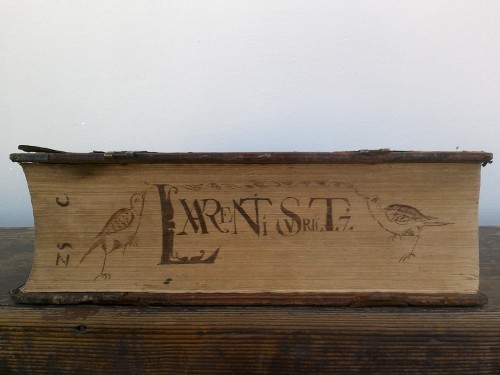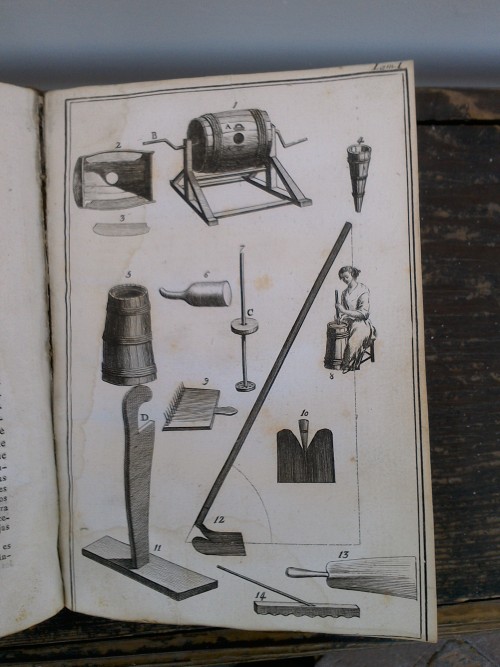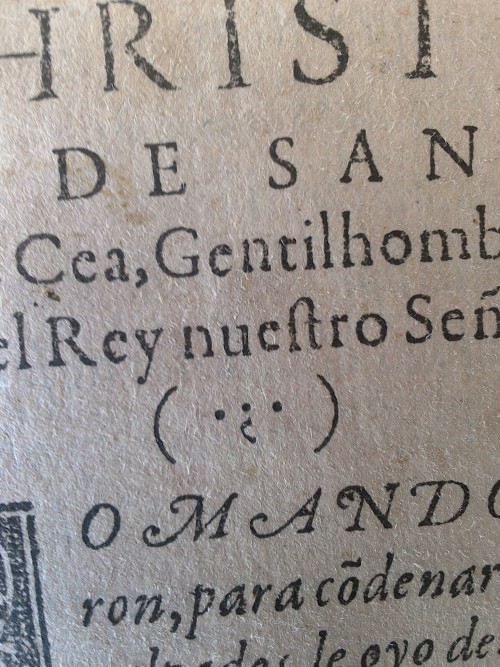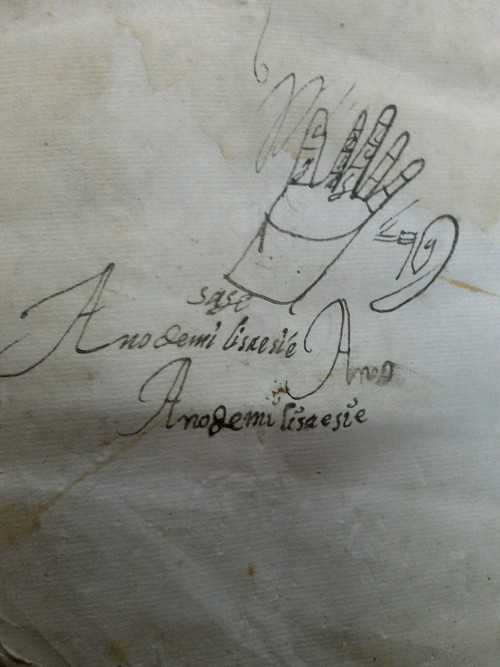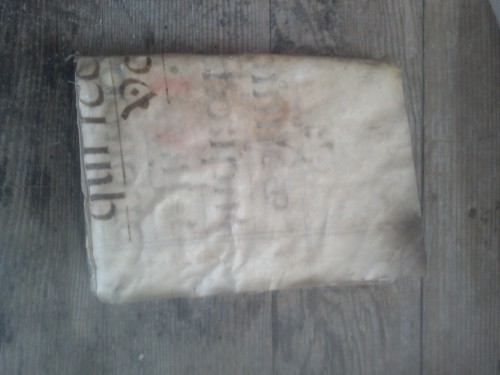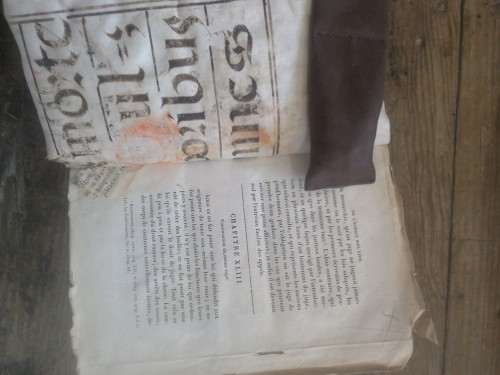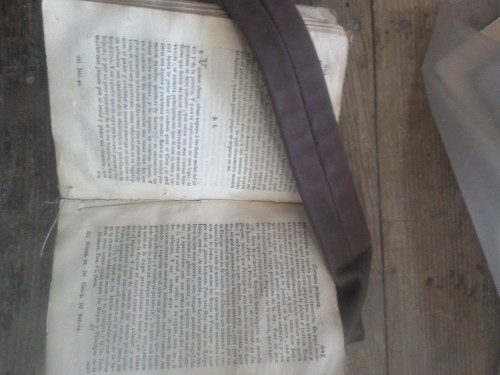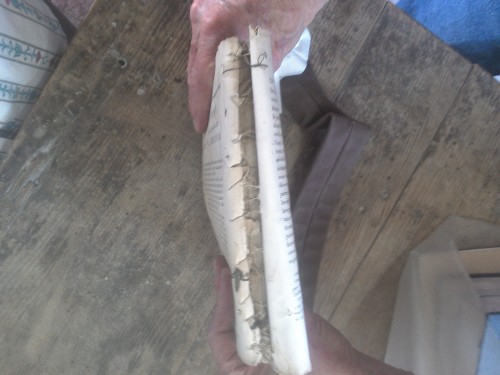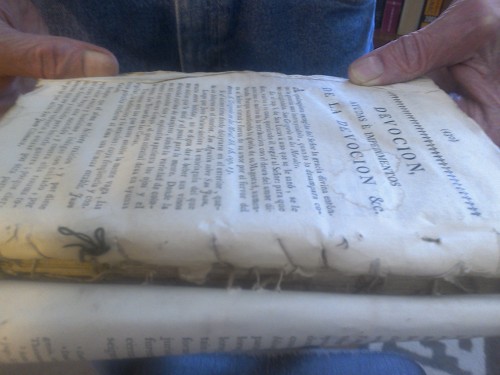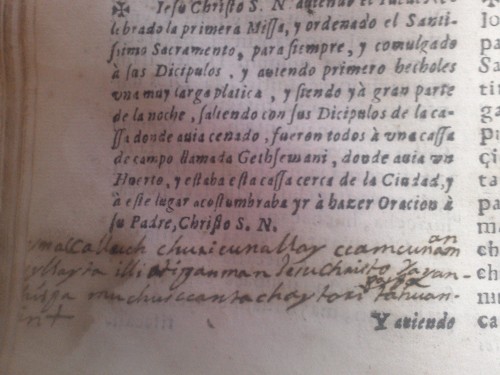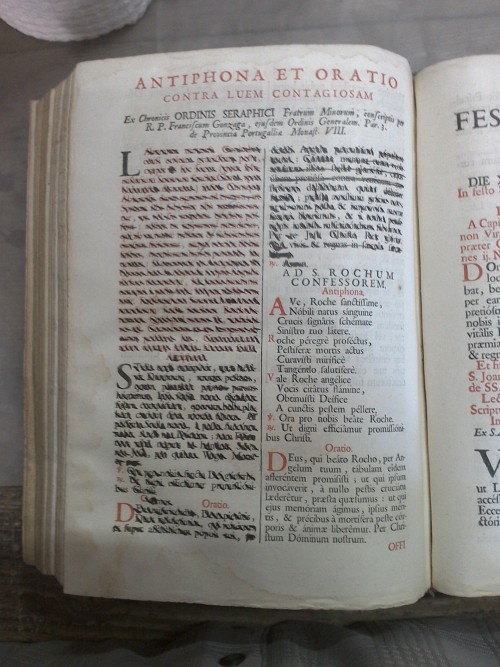#recoleta arequipa
Gun violence–17th century bookplate
Bookplate found to the front of an 1806 Madrid imprint which illustrates a miracle performed by Our Virgin de los Remedios. On June 29, 1639 a man was shot by another pistol-wielding fellow and the Saint saved his life. The deed is illustrated and described to the bottom of the bookplate. Not an ordinary Ex Libris!
Post link
Suffering in Syria
In 1632 a group of Franciscan friars traveled to the Holy Land and Juan de Calahorra tells of their trip in his Chronica de la Provincia of Syria, y Tierra Santa de Gerusalem (Madrid, 1684). His description tells of the cruel wars and miserable conditions throughout the area which run contrary to the noble and courteous principles of nature and could well open any news report of today, 400 years later.
Helen, October 2016
Post link
Fore-edge label
Fore-edge shelf label of volume one of a seven volume set by Laurentius Surius De Probatis Sanctorum Historii (Cologne, 1570-1581). Volumes 2-7 are like-wise nicely labeled, but lack the birds.
Helen, September 2016
Post link
Butter churn
Early illustrations of machinery and equipment are often difficult to understand. Here though is a clear illustration of a butter churn from Semanario de Agricultura y Artes, Tomo I (Madrid, 1979) which quite clearly shows how to build your own churn, along with a display of how to sit while churning and the appropriate apparel to wear.
Helen
July, 2016
Post link
Emoticon from 1603
From Juan Marquez, Los Dos Estados de la Espiritual Hierusalom, Medina del Campo, 1603
Look like a simple “Hi!” to me.
Helen, May 7, 2016
Post link
Strange message from long ago and far away
This is found to the rear of Rodrigo de Portillo, Libro de los Tratados de Christo s.n. y de su Santiss[ima]a Madre, Toro (Spain), 1630
I read it as “Sage—Ano de mi lisaesle” which makes no sense. Nor can I get anything out of putting spaces between various letters in the last word.
The hand with marks on the fingers further adds to the mystery.
Any ideas?
Helen April 28, 2016
Post link
Curious Incidents in the Life of a Book
This series of photos is of the work Sermones de Tiempo by Luis de Granada, Madrid, 1791.
–The first 3 are of the vellum cover, an apparent antiphonal, unknown date, and binders’ waste from an 1844 French text on political science.
–The next is the beginning of the text at page 33.
–Internal sewing.
–End of text at page 430 and a further look at the sewing. The published work continued to 496 pages.
–Back cover.
This treatment presents too many questions to list.
Helen
Dec 12, 2015
Post link
Quechua Marginalia
Though we are in the home of the Quechua language, one rarely sees the language in print and this is the first instance that I have found it in marginalia. Quechua was an unwritten language until the Spanish came in the 16th century and imposed an alphabet on the spoken tongue. A local scholar has transcribed this as:
Umaccallecch churicuchallay ccancunan yllayta illic tipanmam jesuchristo yayanshcispa muchui ccanta chaytan tahuantin (sign of the cross).
Translated into English this means:
The head will disappear. You, my sons will suffer miseries. My shining ray will gleam and the light of our God Jesus Christ’s power will defeat the four.
My sources state that this is not a commentary on the text but a personal observation, no doubt inspired by the text, which is Tratado de los Evangelicos by Francisco de Avila (or Davila) from Lima in 1648. This note was penned during the 17th or 18th centuries. There are no ownership marks which might help to reveal the source, but the author was probably an educated native Peruvian.
Helen
Nov.27, 2015
Post link
The Plague!
Antiphonal and Oration Against the Contagion of the Plague was offered in the Monastery of Saint Clara, Coimbra Portugal (no date) to grant immunity against the plague. This piece was published by Plantin (Antwerp, 1749). It has curiously been entirely defaced with no date or attribution to the defacement.
A version of the original text available at
Are there any experts out there who can explain the reason for the defacement?
Helen
18 Oct. 2015
Post link
Francisco Suarez Indio Filipino
The portrait above of Philip V of Spain was created by Francisco Suarez, one of the most famous of the native artists of the Colony of the Philippines during the Spanish reign. This work follows the title page of Cursus Juris Canonici, 1743 by the Jesuit priest, Pedro Murillo.
Suarez’s work has taken on international significance today.China has claimed ownership one of the islands in the South China Sea which is also claimed by the Philippines. A map by Suarez, drawn in 1734, has been submitted to the United Nations Tribunal on the Law of the Sea as proof of long-standing Philippino ownership.
There is even a Harry Potter connection!
See story at http://verafiles.org/ph-to-submit-300-year-old-map-to-un-in-case-vs-china/
Helen 4Oct.2015
Post link

